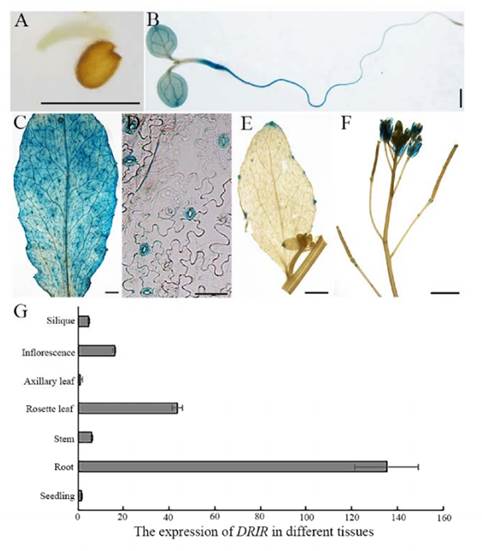植物耐旱耐盐非编码RNA找到

美国科学家发现,一种长链 RNA(核糖核酸)能增强实验植物拟南芥耐受干旱和盐分的能力,这项发现将有助于开发农林植物新品种。
RNA 通常由 DNA(脱氧核糖核酸)转录而成,在生物体内普遍存在。美国得克萨斯农业与机械大学近日发布新闻公报说,该校研究人员新发现的长链 RNA 属于非编码 RNA,不参与编码蛋白质,但能调节其他基因表达,提高植物对恶劣环境耐受力。
研究人员说,这种 RNA 被称为 DRIR,正常情况下在植物体内含量较少,但是当植株遇到干旱或高盐分等压力环境时,其水平就会上升。使用一种抑制植物生长、促进叶子脱落的激素——脱落酸,可人为提高植物体内 DRIR 的水平。
实验表明,用脱落酸使拟南芥体内 DRIR 含量上升可显著提高缺水或氯化钠含量较高的土壤里植株的生存率。此外,有一种基因变异可增强 DRIR 的表达,同样具有增强植株耐旱、耐盐能力的效果。基因分析显示,植物体内高水平的 DRIR 改变了许多基因表达,影响植株的水分输送、抗压能力和脱落酸信号传导等。
相关论文已发表在新一期美国《植物生理学》杂志上。
人们一度认为非编码 RNA 是无用的“垃圾 RNA”,但近年来逐渐发现许多这类 RNA 在催化生化反应、调控基因表达中扮演重要角色。(来源:科技日报)
A Nucleus-localized Long Non-Coding RNA Enhances Drought and Salt Stress Tolerance
Abstract Long non-coding RNAs (lncRNAs) affect gene expression through a wide range of mechanisms and are considered as important regulators in many essential biological processes. A large number of lncRNA transcripts have been predicted or identified in plants in recent years. However, the biological functions for most of them are still unknown. In this study, we identified an Arabidopsis thaliana lncRNA, Drought induced RNA (DRIR), as a novel positive regulator of plant response to drought and salt stress. DRIR was expressed at a low level under non-stress conditions but can be significantly activated by drought and salt stress as well as by abscisic acid (ABA) treatment. We identified a T-DNA insertion mutant, drirD, which had higher expression of the DRIR gene than the wild type plants. The drirD mutant exhibits increased tolerance to drought and salt stress. Overexpressing DRIR in Arabidopsis also increased tolerance to drought and salt stress of the transgenic plants. The drirD mutant and the overexpressing seedlings are more sensitive to ABA than the wild type in stomata closure and seedling growth. Genome-wide transcriptome analysis demonstrated that the expression of a large number of genes was altered in drirD and the overexpressing plants. These include genes involved in ABA signaling, water transport and other stress-relief processes. Our study reveals a mechanism whereby DRIR regulates plant response to abiotic stress by modulating the expression of a series of genes involved in stress response.
原文链接:http://www.plantphysiol.org/content/plantphysiol/early/2017/09/08/pp.17.00574.full.pdf

